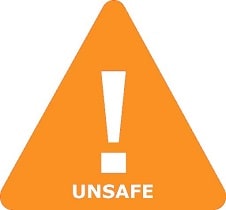Is OPC 1085 Safe in Breastfeeding
Question
I am a breastfeeding mother and i want to know if it is safe to use OPC 1085? Is OPC 1085 safe for nursing mother and child? Does OPC 1085 extracts into breast milk? Does OPC 1085 has any long term or short term side effects on infants? Can OPC 1085 influence milk supply or can OPC 1085 decrease milk supply in lactating mothers?
OPC 1085 lactation summary

- DrLact safety Score for OPC 1085 is 5 out of 8 which is considered Unsafe as per our analyses.
- A safety Score of 5 indicates that usage of OPC 1085 may cause serious side effects in breastfed baby.
- Our study of different scientific research indicates that OPC 1085 may cause moderate to high side effects or may affect milk supply in lactating mother.
- Our suggestion is to use safer alternate options rather than using OPC 1085 .
- It is recommended to evaluate the advantage of not breastfeeding while using OPC 1085 Vs not using OPC 1085 And continue breastfeeding.
- While using OPC 1085 Its must to monitor child for possible reactions. It is also important to understand that side effects vary largely based on age of breastfed child and time of medication in addition to dosage.
- Score calculated using the DrLact safety Version 1.2 model, this score ranges from 0 to 8 and measures overall safety of drug in lactation. Scores are primarily calculated using publicly available case studies, research papers, other scientific journals and publically available data.
Answer by Dr. Ru: About OPC 1085 usage in lactation
At date of last update were not found published data on its excretion into breast milk, Pharmacokinetic data (low protein-binding capacity) make likely excretion into breast milk in amounts that could be significant. Until more information on this drug is available, it is preferred other options that are known to be safer, especially during the neonatal period or in cases of prematurity. Because of a small dose and low absorption to the plasma in a majority of ophthalmic preparations that are topically used, a significant excretion into the milk is unlikely, thus it is considered of very low risk while breastfeeding in this cases. It would be advisable to press on the lacrimal area or tightly close the eyes for a couple of minutes (nasolacrimal occlusion) to minimize the systemic absorption.
Answer by DrLact: About OPC 1085 usage in lactation
No data are available for the use of OPC 1085 during breastfeeding. Because its excretion into breastmilk is probably extensive, other beta-adrenergic blocking drugs are preferred to oral OPC 1085 while breastfeeding a neonate. Infants over 2 months of age have more mature kidney function and are less likely to be affected. Ophthalmic use of OPC 1085 by the mother should pose little risk to the breastfed infant. To substantially diminish the amount of drug that reaches the breastmilk after using eye drops, place pressure over the tear duct by the corner of the eye for 1 minute or more, then remove the excess solution with an absorbent tissue.
OPC 1085 Side Effects in Breastfeeding
A study of mothers taking beta-blockers during nursing found a numerically, but not statistically significant increased number of adverse reactions in those taking any beta-blocker. Although the ages of infants were matched to control infants, the ages of the affected infants were not stated.. None of the mothers were taking OPC 1085.[2] Beta-adrenergic blocking drugs with similar breastmilk excretion characteristics have caused adverse effects in breastfed newborns.[3][4]
OPC 1085 Possible Effects in Breastfeeding
A study in 6 patients with hyperprolactinemia and galactorrhea found no changes in serum prolactin levels following beta-adrenergic blockade with propranolol.[5] There are no reports on the effects of beta-blockade or OPC 1085 use during normal lactation.
Alternate Drugs
Carteolol(Unsafe)
Carvedilol(Low Risk)
Bisoprolol(Low Risk)
Timolol(Safe)
Nebivolol(Unsafe)
Sotalol(Low Risk)
Atenolol(Unsafe)
Propranolol(Safe)
Acebutolol(Unsafe)
Nadolol(Unsafe)
Metoprolol(Safe)
Levobunolol(Low Risk)
Labetalol(Safe)
Phenylephrine(Low Risk)
Acetazolamide(Safe)
Timolol(Safe)
Travoprost(Safe)
Pilocarpine(Unsafe)
Latanoprost(Safe)
Epinephrine(Safe)
Brinzolamide(Low Risk)
Brimonidine(Safe)
Levobunolol(Low Risk)
Bimatoprost(Safe)
Carteolol(Unsafe)
